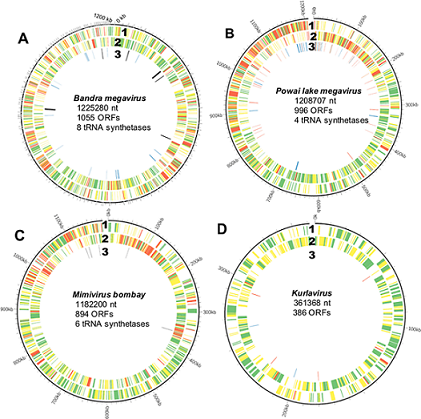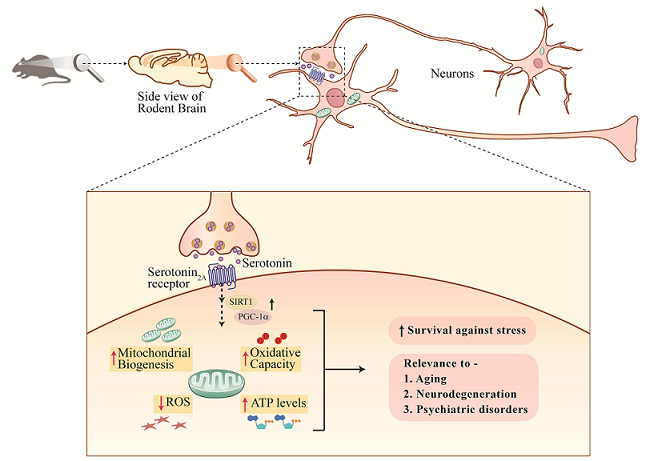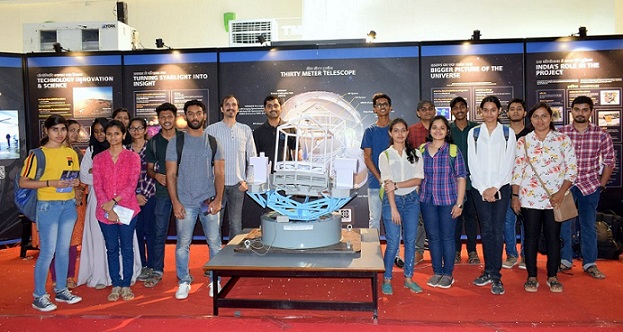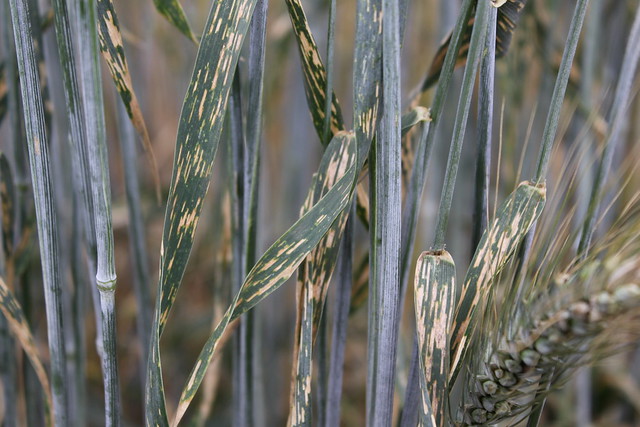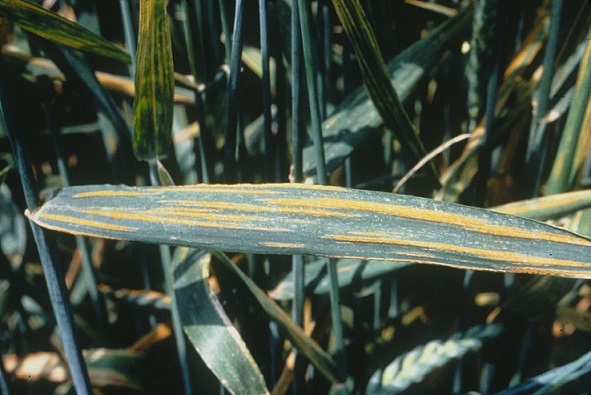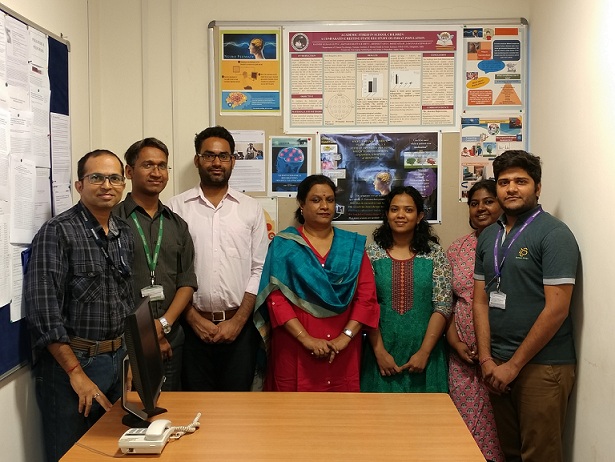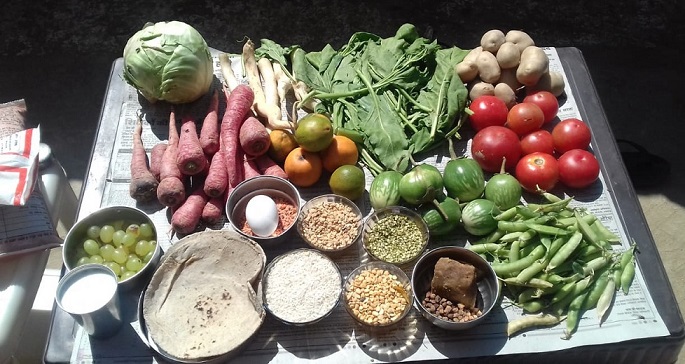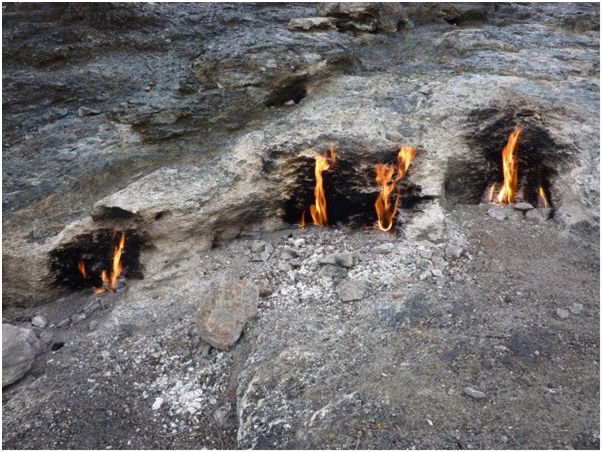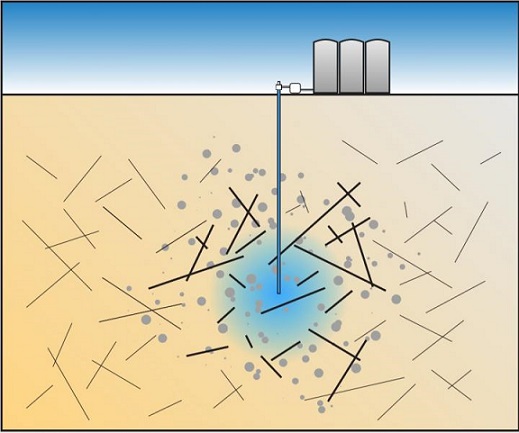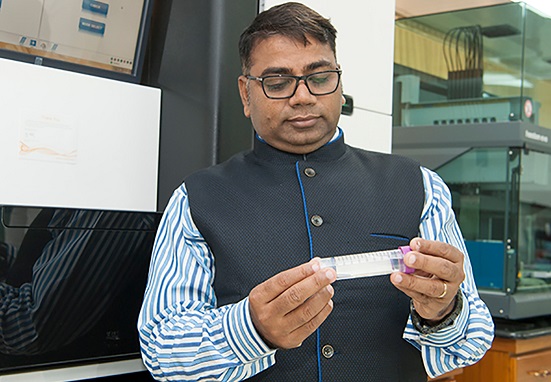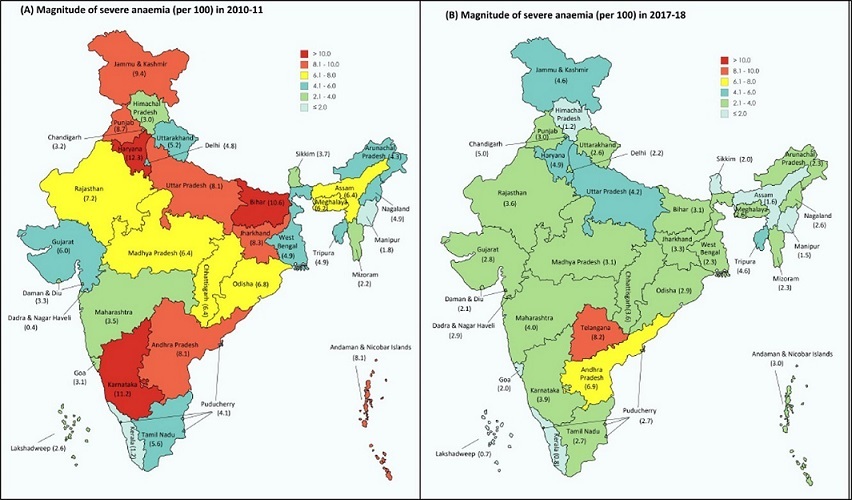
Magnitude of severe anaemia
The haemoglobin levels below 13.5 in case of men and 12 in case of women is considered as an anaemic condition while the level below 7 constitutes a case of severe anaemia. This public health concern is particularly challenging in India as a quarter of all severely anaemic individuals globally and 75 percent severely anaemic individuals in South Asia are in India.
While the elimination of anaemia remains a challenge, a new study based on data from Health Management Information System of India (HMIS) has reported a decline of 7.8% in incidence of severe anaemia during the last decade.
The study shows significant drop in severe anaemia cases in the last decade - from 11.3% in 2008-2009 to 3.29% in 2017-2018 in the country. The instance of severe anaemia varies widely across states. The magnitude is low (less than 2%) in Kerala, Nagaland, Himachal Pradesh and Goa. In Bihar, the percentage has declined from 10.6 to 3.1 in nearly ten years. Similarly, in Haryana, this number has fallen from 12.3 to 4.9.
However, severe anaemia is high in economically better states such as Telangana (8-10%) and Andhra Pradesh (6-8%). This is because although poverty is one of the factors, the prevalence of this nutrition-related disease is dependent on a range of other factors such as climate, genetic predisposition and other factors. For example, in Telangana, the prevalence of vitamin-B12 deficiency in the elderly urban population may be making them anaemic. Similarly, the infestation by hookworms and whipworms is a factor increasing numbers of severe anaemia patients in Andhra Pradesh.

Dr. Kaustubh Bora
" A climate that favours the transmission of malaria in a state also makes people prone to low haemoglobin levels increasing anaemic counts in population. "
“This study is important as it provides a comprehensive narrative of the severe anaemia situation in the country, encompassing every state and union territory and helps to understand how we have fared over the last 10 years,” explained Dr. Kaustubh Bora, a scientist at the Regional Medical Centre of ICMR in Dilburgh, Assam, while speaking to India Science Wire.
Sickle cell anaemia and beta-thalassemia syndromes are less prevalent in North-East India than in the other regions giving them a health advantage. A climate that favours the transmission of malaria in a state also makes people prone to low haemoglobin levels increasing anaemic counts in population.
“It is an important study reflecting on the prevalence of a common disease like anaemia. The quality of data depends on the source from which it has been mined, so it may leave a lot of scope for improvement,” commented Dr. Pranatar Chakrabarti, Professor at NRC Medical College, Kolkata, who is not connected to the study.
The results of this study have published in the journal Tropical medicine and International health.
India Science Wire

